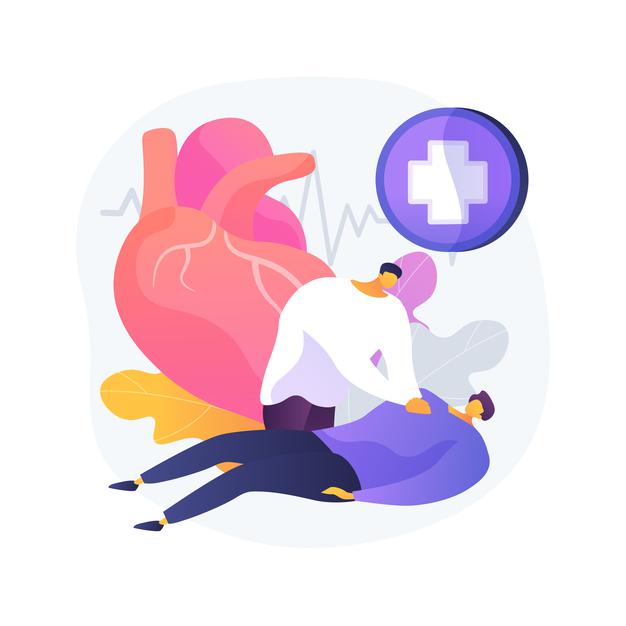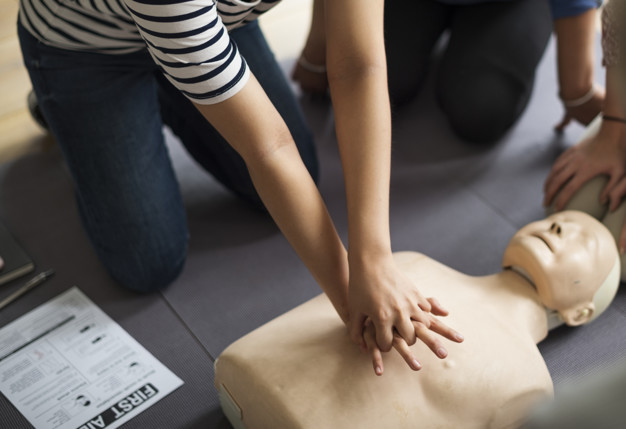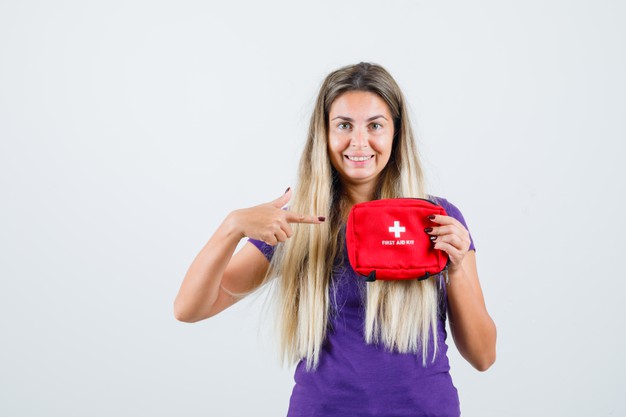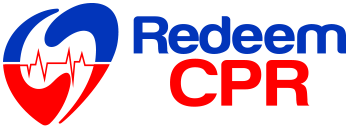
Whether you’re working in the medical field or taking life-saving courses as a job requirement, you may notice some overlap between different concepts and courses. There are differences, although they may seem subtle. A lot of the difference has to do with the level of training that is required for each and some of it has to do with actual variations in the applied practice of each. Use this as a guide to help you navigate the different requirements of each and how you can use certification in first aid, CPR, and BLS.
BLS
BLS, or Basic Life Support, is a term used to describe an advanced form of CPR for healthcare providers like nurses, paramedics, and lifeguards, instead of the general public. BLS covers things like first aid basics, injury and environmental emergencies, preventing illness and injury, adult and child choking procedures, and adult and child CPR and AED use. BLS certification is an umbrella that also covers a CPR certification, as many of the practices that fall under BLS training are also taught in CPR training. There are, however, a few distinct differences between the two. While there is some debate surrounding whether the two are the same or not, Basic Life Support involves care that is applied in hospital settings. Administering oxygen and in-hospital procedures are actions that are taught and utilized in BLS certification. Further, BLS is better executed in team settings, like a hospital, where advanced medical equipment and supplies are readily available. CPR, on the other hand, would be a quick procedure that can be done on instinct with your bare hands and knowledge of technique.
The Basic Life Support algorithm, or course of action, involves the immediate recognition of cardiac arrest and the implementation of efficient compressions and early defibrillation. Trained healthcare providers will assess unresponsiveness and the absence of breathing and begin administering high-quality CPR with adequate depth. A pulse check of five to 10 seconds is recommended before integrating a team approach towards compressions and rescue breathing. Rhythm detection should take place as soon as an AED or defibrillator is available, with subsequent shock. If the rhythm is not shockable, then CPR should be administered. If there are signs of breath, the victim should be attached to a cardiac monitor. If the victim shows no signs of respiration, the healthcare provider should activate EMS and retrieve the AED. The healthcare provider should check the pulse of the victim and should perform rescue breathing if a pulse is found. If no pulse is found, compressions should be initiated at the rate of 30:2.
CPR

For professionals and non-professional rescuers alike, CPR, or cardiopulmonary resuscitation, is a lifesaving technique that can be used in a number of emergencies. Heart attacks, near-drownings, and other situations where someone’s breathing or heartbeat has stopped are all scenarios that require CPR. The great thing about CPR is that even if you are untrained in CPR, you are still able to provide some support to the victim. It is always better to try to do something than nothing at all — especially if you are the only one on the scene with the victim. If you are untrained, provide hands-only CPR with uninterrupted chest compressions of 100 to 120 per minute until healthcare providers arrive. If you are trained in CPR, check the victim’s pulse and breathing for 10 seconds before giving 30 chest compressions and two rescue breaths. It is important to remember that CPR requires a bit of force, so let your body weight help you administer hard and fast compressions that are at least 2 inches deep in the middle of their chest. While delivering rescue breaths, the victim’s head should be tilted back slightly and the chin should be lifted. Pinch their nose and place your mouth over the victims’ to create a seal. Keep your heard turned towards their chest so you can watch their chest rise and fall as you administer the breaths.
High-quality CPR, which can be performed by anyone, including bystanders, have a few key characteristics, including compressions at an adequate rate and depth, proper hand placement, and minimized interruptions in chest compressions. It is important to note that the administration of CPR varies for adults, children, and infants. Adults receive CPR with two hands in the middle of the chest with full breaths. Children require one or two hands in the center of their chest with full breaths. Infants only need two fingers in the center of the chest, about one finger-width below the nipples and compressions with about 1.5 inches of depth. Two puffs of air are fine for infants to avoid excessive ventilation.
First Aid

First aid is the ability to respond to certain situations and help those in need while waiting for medical professionals to arrive on the scene. Because first aid training covers so many topics and scenarios, it is always recommended to take this course in-person, as the classroom setting allows for interaction and encourages questions for clarification. Training usually takes a few hours, after which you will be given a two-year certification that will give you the authority to provide medical assistance to someone in need while medical professionals make their way to the scene. Similar to CPR and BLS training, there are different methods of administering first aid on adults and children and babies. While you might mainly associate first aid with flesh wounds, the practice and application of the trade is rather complex and involves a range of conditions, like burns, choking, external bleeding, heart attack, stroke, and seizure. So, as you can see, you must acquire a wide set of skills of knowledge in order to actively and appropriately respond to each scenario that consists of any of these conditions. The good thing about first aid certification, however, is that anyone can take these courses and become certified to help in emergency situations.
When coming across a victim, assess the scene and make sure it is safe before using context clues to figure out what happened. Then, see if the victim is conscious. This can be done by tapping the victim on the shoulder (if the victim is an adult or child) or by tickling or tapping the victim’s foot (if the victim is an infant). Check for normal breathing and responsiveness for about five to 10 seconds. If the victim is breathing and conscious, interview them about allergies, medications, and medical history while designating someone other than yourself to call 911. During this time, you should be administering any treatments to wounds or conditions. If they are unresponsiveness, designate someone to call 911 before beginning CPR. It is important to call 911, whether the person is conscious or not because they might have internal injuries or head injuries that cannot be detected without equipment. Continue administering CPR until the victim shows signs of life or until a trained medical professional arrives on the scene.
Becoming a lifesaver is an important job that requires knowledge of basic and advanced techniques. The good thing, however, is that you do not need to spend years of your life in medical school to acquire this knowledge. When you register with Redeem CPR, you have all this knowledge at your fingertips through our online training, healthcare training, mobile courses, community training, and first aid training. To acquire these life-saving skills, call us for more information or sign up for a course today!


